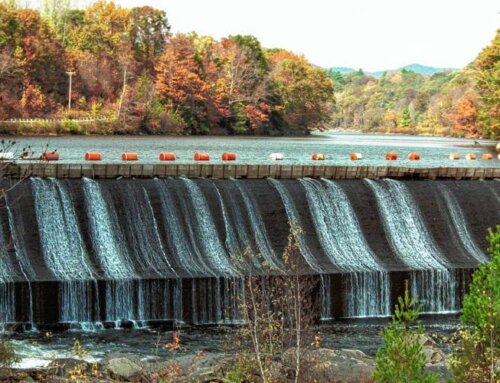February 3, 2022
The Honorable Andrew Renzullo, Chair
House Resources, Recreation, and Development Committee
Legislative Office Building, Room 305
Concord, NH 03301
Re: HB 1071- An Act relative to wake boarding.
Dear Chair Renzullo and Members of the Committee:
Please consider Connecticut River Conservancy’s (CRC) comment on HB 1071. This bill would require any boats used for wake surfing to maintain a minimum distance of 250 feet from shore, docks, and other boats. The CRC supports this bill and the creation a minimum setback for wake surfing activities, but we believe requiring a minimum setback of 1,000 feet and a depth of at least 20 feet for wake surfing would provide better protection from the adverse effects of these activities to the shoreline and other recreators.
CRC is a nonprofit citizen group established in 1952 (originally called the Connecticut River Watershed Council) to advocate for the protection, restoration, and sustainable use of the Connecticut River and its four-state watershed. CRC’s vision of both economic and ecological abundance informs our work to collaborate, educate, organize, restore, and intervene to preserve the health of the entire Connecticut River watershed, including its tributaries for generations to come. The CRC supports sustainable recreation on rivers and lakes, but we must ensure that activities like wake surfing only happen on water bodies that can handle their unique impact.
Because it is so heavily impounded by dams, many reaches of the Connecticut River function more like lakes than a natural free flowing river. On these sections of the river, motorboat traffic can be high, and while there is a no wake zone on the river enforced by NH, increases in wake boat use on the river will likely have a detrimental effect on the already eroding riverbanks in the impoundments and will likely contribute to the spread of invasive aquatic species.
The boats used in wake surfing are designed to create 4-to-5-foot wakes, which are significantly larger than both natural, wind-driven waves and wakes from other types of boats. The surge in wave energy produced by these boats increases shoreline erosion. In addition, the waves can disrupt wildlife, such as washing eggs out of the lakeside nests of loons or disturbing amphibian egg masses. Furthermore, the downward-angled engines of these boats greatly stir up the sediments of shallow lakes and impounded rivers, which lowers water quality and puts settled nutrients like phosphorus back into the water column, exacerbating algal and cyanobacteria blooms. This disturbance can also spread existing aquatic invasive species (AIS) such as milfoil. Because of wake boat ballasts’ enormous volumes (2,000 to 6,000 pounds of water) compared to bass boat live-wells (up to 250 pounds), and because, unlike live-wells, wake boat ballasts are impossible to inspect, clean, completely drain, and dry, they profoundly increase the risk of lake-to-lake AIS spread compared to other boats. There are also significant safety concerns as the large wakes can be hazards to nearby boaters and swimmers. As the popularity of wake surfing grows, so will its effects on the ecosystem and fellow recreational users.
A minimum distance of 1,000 feet would allow enough time for the waves produced to dissipate by the time they reach the shoreline or others in the water body. A minimum depth requirement of 20 feet would lessen the impact the propeller thrusts of these boats have on lake and river bottoms.
CRC respectfully suggests that HB 1071 be voted “ought to pass,” though we strongly urge the committee to consider amendments to increase the minimum distance and add a minimum depth requirement.
Thank you for the opportunity to comment on this bill.
Sincerely,
Kathy Urffer
River Steward VT/NH
kurffer@ctriver.org
802-258-0413
Cc: Rep. Gottling
Rep. Deshaies
Rep. J. MacDonald
Rep. Weston
Rep. Tanner
Rep. Ebel








